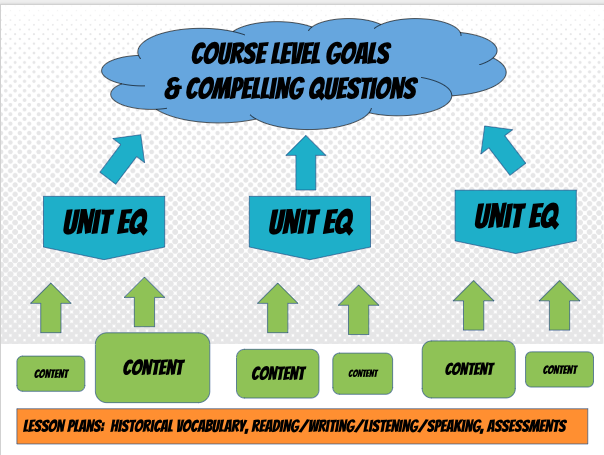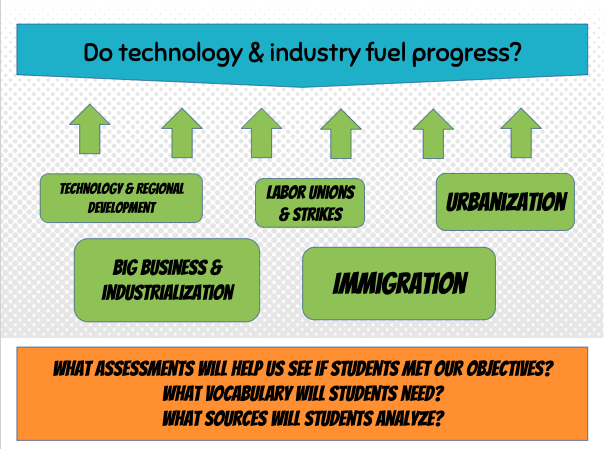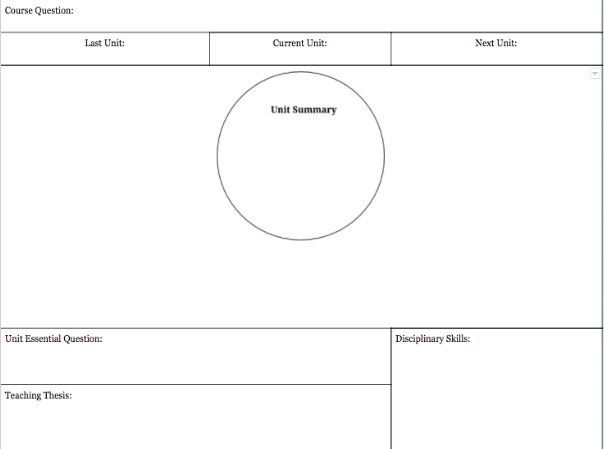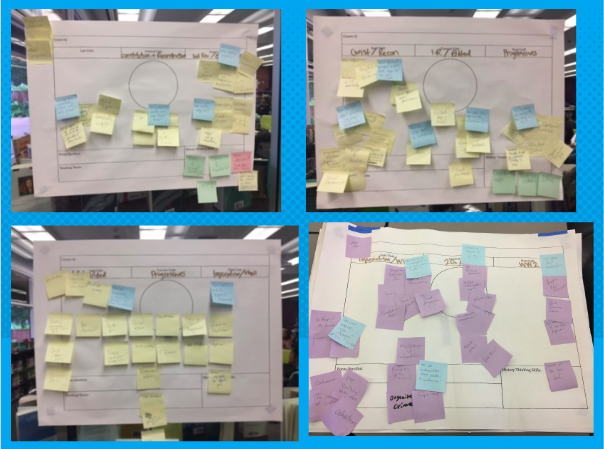|
My United States history course team embarked on a curriculum mapping and revision project a couple years ago. It has taken some time for us to build new units focused on essential questions, primary & secondary sources, and specific historical thinking skills. We utilized resources from several key organizations to complete our planning process. We started with sticky notes and poster paper. The California History Projects (Berkeley, UCLA, UCI) across the state provide amazing resources for designing lessons with planning templates and sample lessons. Additionally, the C3 Teacher Inquiry Design Model offered us a framework to approach unit design after completing the big picture. We began with the following image to help us visualize our curriculum map. In years past we had a chart that included these essential details; however, without the ability to move information around easily, the plan was stagnant. Google Drawing allowed us to play with the structure and contents. We approach this task unit by unit. It took us a little over a year to finish the process. I made the following template into giant posters and we used sticky notes to organize the materials. For each unit we listed key history content, primary & secondary sources, and historical thinking skills on different colored sticky notes. The sticky notes allowed us to group and re-group content. This is where the real discussion occurred. We had to make decisions between content and activities we knew were essential and those that we taught because of personal interest. There could have been a never-ending amount of sticky notes posted, but we used the grouping task as a way to add additional content or to remove content that didn't quite fit. After we were satisfied with the groupings, we created guiding questions for each group. Finally, we reviewed all of the supporting questions to design the unit essential question.
The first unit we finished was about the era of Imperialism and World War 1. We used the C3 Teacher IDM template to complete the unit. The process allowed us to collaborate around a specific goal: design units that allowed students to build historical thinking skills while engaging in rigorous content. As we taught each unit, we met as a group to discuss the formative assessments created and to analyze student work samples. But those steps will be for a future post. If you want some more information or resources about this ongoing project, check out my presentation on "How Can I Plan More Effectively?" that was given at the California Council for Social Science conference last year.
0 Comments
|
Archives
January 2019
Categories
All
|
||||||
Proudly powered by Weebly




 RSS Feed
RSS Feed